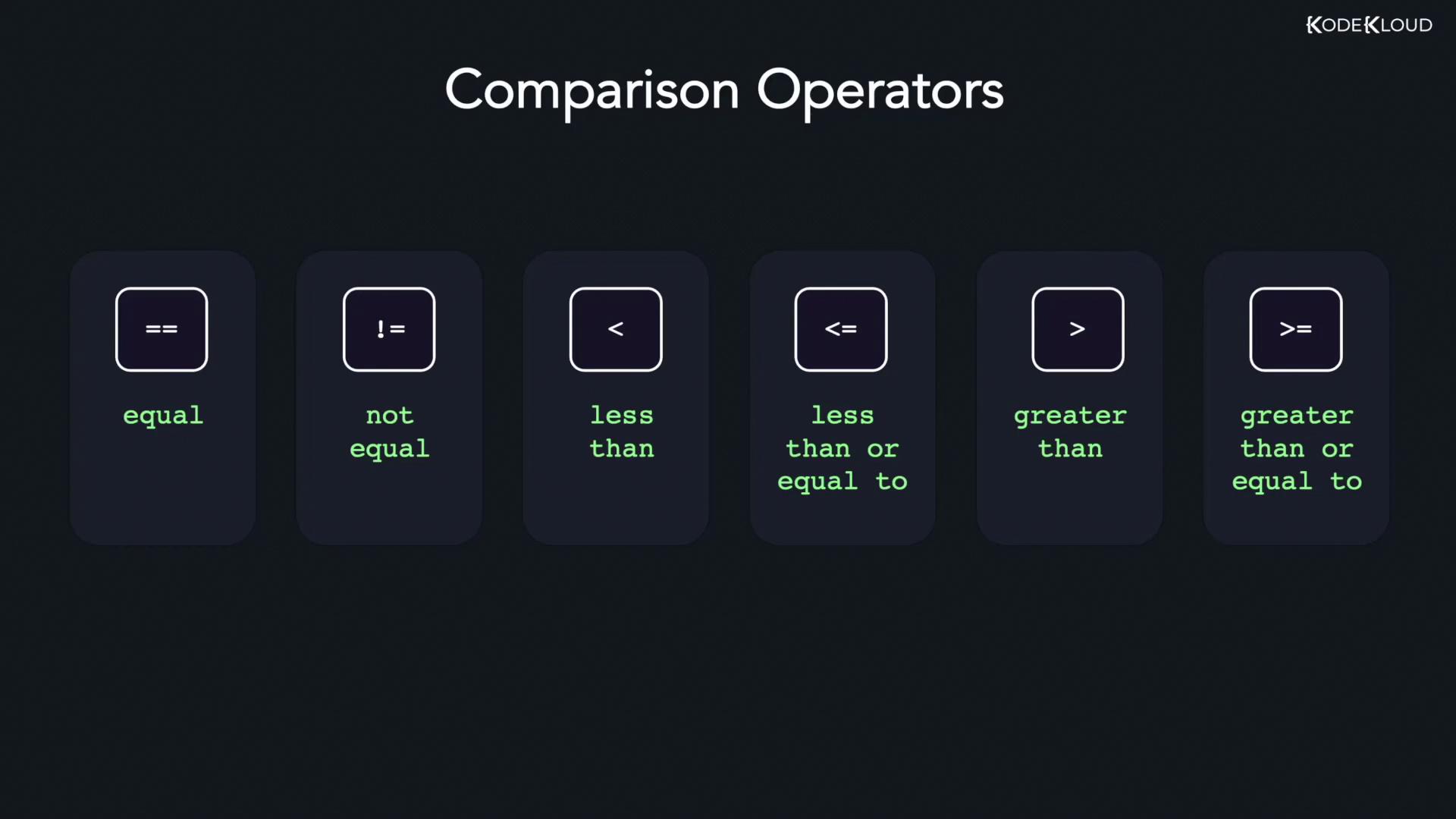Golang
Operators and Control Flow
Comparison Operators
In this article, we explore the various comparison operators in Golang. These operators compare two operands and return a Boolean value based on the result—either true or false. They are essential in evaluating relationships between numbers, strings, and more, such as checking for equality or determining if one value is greater or smaller than another.
The most commonly used comparison operators in Go include:
- Equal to (==)
- Not equal to (!=)
- Less than (<)
- Less than or equal to (<=)
- Greater than (>)
- Greater than or equal to (>=)
Below is a diagram summarizing these operators:

Equal To Operator
The equal to operator (==) checks whether two values are equal and returns true if they are; otherwise, it returns false.
Consider the following example where we compare two strings:
package main
import "fmt"
func main() {
var city string = "Kolkata"
var city_2 string = "Calcutta"
fmt.Println(city == city_2)
}
When you run the program:
>>> go run main.go
false
Since "Kolkata" is not equal to "Calcutta", the output is false.
Tip
Remember that comparison of strings is case-sensitive in Go.
Not Equal To Operator
The not equal to operator (!=) returns true if the two operands are not equal, and false if they are equal. This operator is helpful when you need to ensure values differ.
Here’s an example using two strings:
package main
import "fmt"
func main() {
var city string = "Kolkata"
var city_2 string = "Calcutta"
fmt.Println(city != city_2)
}
When you run the program, the output is:
>>> go run main.go
true
Because the two strings differ, the expression evaluates to true.
Less Than Operator
The less than operator (<) determines if the left operand is smaller than the right operand.
Consider the following example with two integers:
package main
import "fmt"
func main() {
var a, b int = 5, 10
fmt.Println(a < b)
}
Since 5 is less than 10, the program outputs:
>>> go run main.go
true
Less Than or Equal To Operator
The less than or equal to operator (<=) compares two values and returns true if the left operand is either less than or equal to the right operand.
For example:
package main
import "fmt"
func main() {
var a, b int = 10, 10
fmt.Println(a <= b)
}
Here, both integers are equal, so the result is true.
Greater Than Operator
The greater than operator (>) checks if the left operand is greater than the right operand.
In the example below, two integers are compared:
package main
import "fmt"
func main() {
var a, b int = 20, 10
fmt.Println(a > b)
}
As 20 is greater than 10, running the program produces:
>>> go run main.go
true
Greater Than or Equal To Operator
The greater than or equal to operator (>=) returns true if the left operand is greater than or equal to the right operand.
Consider this example:
package main
import "fmt"
func main() {
var a, b int = 20, 20
fmt.Println(a >= b)
}
Since both numbers are equal, the output is:
>>> go run main.go
true
That's it for this article. Now it's time to practice what you've learned about Go's comparison operators and enhance your coding skills!
Additional Resources
For more information on Go programming and best practices, visit the Golang Documentation.
Watch Video
Watch video content
Practice Lab
Practice lab